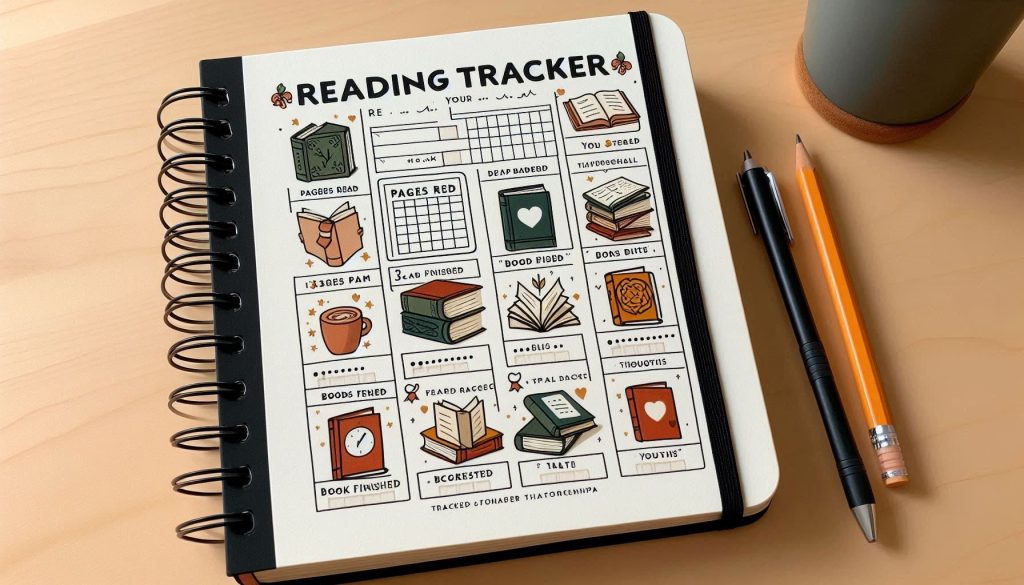Building a Reading Habit: Mindset, Purpose, and the Journey
Reading has always been a challenge for me. I admire people who can lose themselves in a book, finding something new with each page. But for some of us, it isn’t so easy. Time constraints, distractions, or the simple difficulty of forming a habit can make reading feel more like something we “should” do, rather than something we truly enjoy.
To anyone who struggles with reading, the path to becoming a reader is both practical and mental. It isn’t just about getting through more books—it’s about finding purpose, making manageable adjustments, and embracing the journey. This post outlines lifestyle tweaks, mindset shifts, and even metrics to help us make reading a consistent, fulfilling part of our lives.
1. Cultivating a Purposeful Mindset

Start with Why
The first step in building a reading habit is understanding why you want to read. Are you reading to expand your knowledge? To relax? To grow in your career? Knowing your purpose is like setting a compass for your reading journey. When you have a clear “why,” the act of reading gains meaning, making it easier to stay engaged and motivated.
Embrace Small Wins
It’s easy to expect ourselves to read for hours right away, but any habit builds gradually. Start small. Maybe aim for 10–15 minutes a day, or a few pages. Each step is progress. Give yourself permission to take your time, knowing that with consistency, those small moments will add up. This shift in perspective is powerful—consistency matters more than the quantity of pages you get through.
Reframe “Should” as “Want”
If reading feels like an obligation, it becomes harder to enjoy. Try to frame it as something you want to do: a quiet moment to explore ideas, perspectives, and stories. A good book has the power to transport and transform. When approached with curiosity, reading becomes something to look forward to.
2. Lifestyle Tweaks That Support Reading

Create a Cozy Reading Space
Our environment impacts how we feel about an activity. Creating a space just for reading—a comfortable chair, a cozy blanket, a favorite nook—makes a difference. Minimize distractions by keeping your phone away and making this space somewhere you actually want to spend time in. Over time, your mind will start associating this spot with the comfort and focus needed for reading.
Find Your Ideal Reading Time
Whether you’re a morning person or prefer winding down in the evening, experiment with finding a time that feels right. Consistency matters, so choose a time that fits naturally into your day. Maybe mornings feel too rushed but evenings offer quiet moments. As your brain associates reading with that time, it becomes less of a task and more of a natural part of your routine.
Make Reading a Ritual
Consider pairing reading with something you already enjoy. Brew a cup of tea, play some soft instrumental music, or simply relish the silence. These small comforts turn reading into a ritual, creating a positive association that makes it easier to reach for a book instead of a screen.
3. Types of Reading: Choose What Works for You
Deep Reading vs. Light Reading
Not every reading session has to be intense. Some days, you’ll want to dive deep, analyzing each word. Other days, light reading—a novel, a magazine—might be just what you need. Switching between deep and light reading keeps things fresh and helps you stay engaged without feeling overwhelmed.
Purpose-Driven Reading
Sometimes reading is goal-oriented, like when learning a skill. Here, note-taking and reflecting might help you retain ideas. But when reading for relaxation, let yourself flow through the pages without overthinking. Reading with different purposes lets you connect with material in a way that feels meaningful in the moment.
Don’t Be Afraid to Skim
Some days, skimming is enough. For informational reading, skimming helps you grasp key points without getting bogged down in detail. Allowing yourself to read flexibly, rather than strictly cover-to-cover, makes reading adaptable to your mood and schedule.
4. Embracing Audiobooks as a Valuable Tool

Audiobooks Are Reading, Too
If sitting down with a book feels challenging, audiobooks offer a powerful alternative. Listening to a well-narrated audiobook can be as enriching as reading a physical book, allowing you to absorb stories and ideas during a commute, workout, or while doing chores. Audiobooks make reading accessible, integrating it seamlessly into everyday life.
Benefits of Audiobooks
Audiobooks offer a flexible way to engage with books, especially with complex material that can feel easier to digest when spoken. For some, hearing a narrator brings added depth and comprehension, making it easier to stay focused and retain information.
Tips for Audiobook Success
To get the most out of audiobooks:
- Pick engaging narrators who bring the text to life.
- Adjust the playback speed to a pace that keeps you engaged.
- Pause to reflect or take notes if it’s a learning-oriented book.
Tracking Audiobook Progress
Track audiobooks just like physical books. You can log listening time, chapters, or completed books. Audiobooks count toward your reading goals, so include them proudly in your progress.
Audiobooks as a Gateway
For those new to reading, audiobooks can be a gentle entry point. They allow you to experience stories without the barrier of sitting down with a book. A great audiobook can even inspire you to pick up a physical or digital copy, enhancing your connection with the material.
5. Tracking Progress: Simple Metrics That Build Momentum

Pages, Minutes, or Titles
Tracking helps you measure progress. Try setting small daily goals—such as 10 pages, 15 minutes, or one book a month. Metrics don’t need to be strict, but they provide a small nudge that keeps you moving forward and builds a sense of accomplishment.
Keep a Reading Journal
Jotting down thoughts after each session—whether it’s quotes, reflections, or summaries—reinforces what you’ve read. A reading journal helps deepen your connection to the material and serves as a tangible reminder of your journey. It’s motivating to look back and see how much you’ve absorbed.
Celebrate Small Wins
Finished a chapter? Reached a milestone? Celebrate! Treat yourself to something you enjoy—whether it’s a coffee outing or a few minutes of relaxation. Recognizing small achievements reinforces the positive aspects of reading and makes it easier to keep going.
6. Common Roadblocks—and How to Overcome Them

The Intimidation of Big Books
Long books can feel overwhelming. Break them into smaller sections and tackle one at a time. Treat each section as its own goal, letting go of how long it takes to finish. Progress, no matter how slow, still counts.
Struggling to Focus?
Focus can be difficult, especially with constant notifications. Set a timer for a distraction-free reading session, even just 5–10 minutes, and gradually increase as your focus improves. Apps or phone settings like “Do Not Disturb” can help create that uninterrupted time.
Feeling Like You’re “Not a Reader”?
Reading isn’t exclusive; it’s a habit anyone can build. Maybe you read slowly, prefer audiobooks, or stick to certain genres. That’s okay. As long as you’re curious and open to new ideas, you’re a reader. The more you engage, the more you’ll grow as one.
A Final Note: Enjoy the Journey, Not Just the Goal

Reading is about more than just finishing books. It’s a journey of growth, inspiration, and discovery. As you track progress, remember that the true reward lies in what you gain along the way. Whether you finish one book or ten, each story, idea, and moment of reflection enriches your life in unexpected ways.
Here’s to finding purpose in every page, to embracing flexibility with audiobooks and physical books alike, and to celebrating each milestone, no matter how small. Happy reading.


